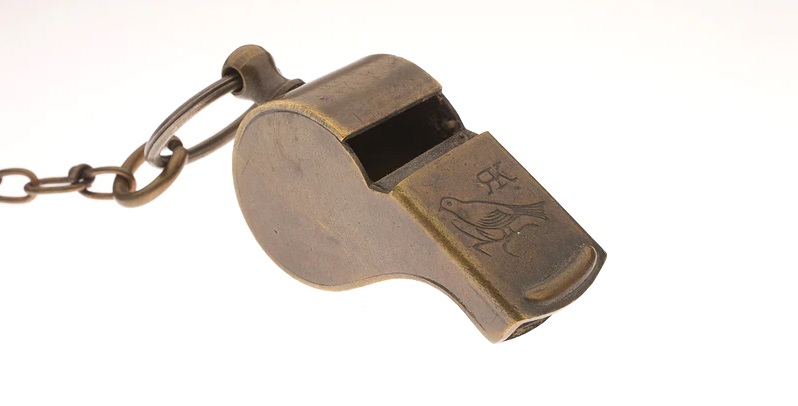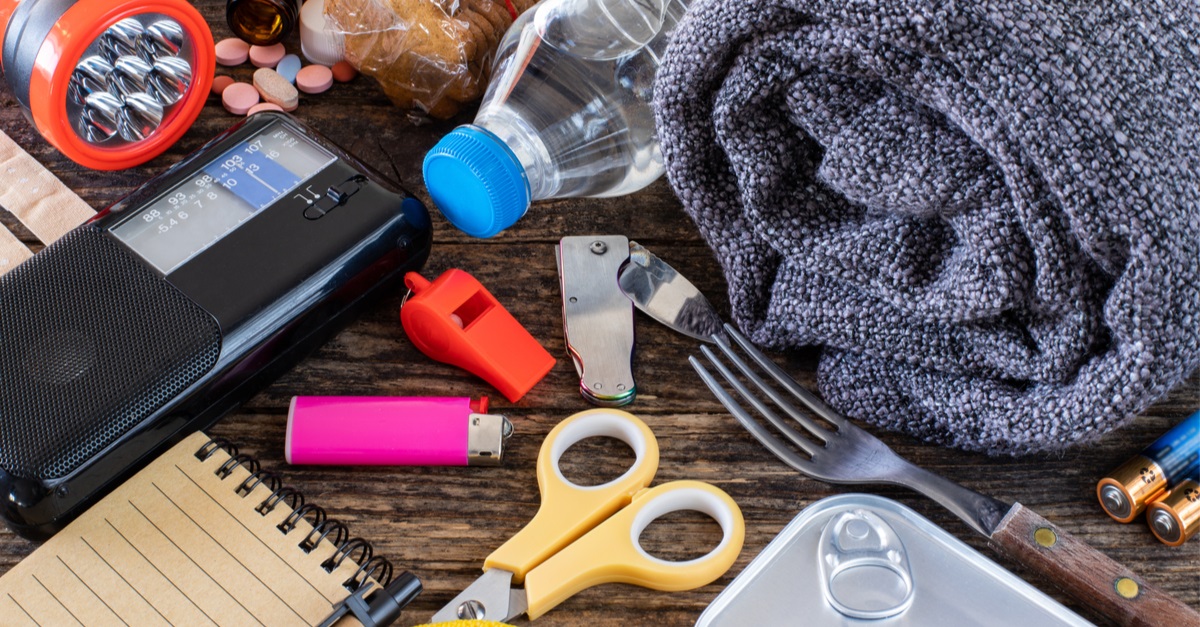Last Updated on October 7, 2022 by admin_hunter
An emergency whistle should be in your backpack every time you go camping, hiking, or hunting, but it’s only effective if you know how to use it. While you may hope there’s never a time when you need to use it, you should always be prepared.
You never know if you may become turned around on a hiking trail or when you’re traveling from your campsite to your hunting location. Even worse, you could injure yourself while hunting, hiking, or camping and need to immediately signal for help, and an emergency whistle is exactly what you need.
What is an Emergency Whistle?
An emergency whistle is a lightweight, compact whistle that will sound a loud distress signal when it’s blown. Some emergency whistles are designed with built-in tools like this 3-in-1 emergency whistle that includes a built-in thermometer and compass.
When blown, the emergency whistle will sound loud so that others nearby can hear it and respond. A good emergency whistle should be at least 100 decibels or more so that it can be heard from far away.
Emergency whistles take up virtually no room in your backpack, so there’s no excuse why you shouldn’t carry one with you at all times while outdoors. While you can stay on marked trails and prevent getting lost, you can’t always prevent injuries. Having an emergency whistle to signal when you’re injured can mean the difference between life and death.
Many emergency whistles are pealess because the pea inside of the whistle can become corroded, jammed, or frozen, rendering the emergency whistle useless. If you choose an emergency whistle with a pea included, make sure it’s made of quality material with a quality design so that it works properly every time.
Best Emergency Whistle Options
- LuxoGear Emergency Whistles (2 pack)
- Michael Josh Outdoor Survival Whistles (2 pack)
- Farran Outdoor Emergency Whistles (2 pack)
- Openfly Emergency Whistles Kit (8 pack)
How to Signal for Help Using an Emergency Whistle

To signal for help, you will need to blow the whistle three times in a row. This is the international signal for distress. The three signals from the emergency whistle need to be loud and close together. The total time of the three blasts should be about three seconds long. Once you have blown the whistle three times in a row, listen for a response.
If someone nearby has an emergency whistle, they can respond by blowing their whistle one time. One whistle blow asks the question, “where are you?” to which you can respond by blowing your whistle four times in a row. This will help guide the respondent in your direction.
The respondent will likely continue to blow their whistle one time while making their way toward you. You should keep blowing your whistle four times in a row in response to their whistle.
If you blow the whistle three times in a row with no response, don’t give up. Continue blowing your emergency whistle three times in a row, taking a short break in between each time. An emergency whistle is much louder than a yelling for help and you can use much less energy blowing a whistle than yelling, making it a necessity to keep in your backpack at all times.
What to Look for in an Emergency Whistle
Pealess
We recommend choosing a pealess emergency whistle so that you don’t have to worry about the pea inside the whistle becoming damaged and rendering the whistle useless. That doesn’t mean that pea whistles are bad or should be avoided; however, most emergency whistles are pealess to avoid this issue altogether.
Decibels
The emergency whistle should be 100 decibels or more for it to be loud enough to be heard when blown. An emergency whistle of fewer than 100 decibels may not be loud enough to reach nearby hunters, campers, or hikers.
Lanyard or Key Ring
Many emergency whistles come with a lanyard or key ring for you to easily and conveniently clip the whistle onto your backpack or on your belt. This is often a better option than storing the whistle in a pocket in your backpack. Even though an emergency whistle takes up virtually no room in your backpack, it’s more convenient and easier to access the emergency whistle while it’s attached to the outside of your backpack or on your belt.
Color
Many emergency whistles are bright orange so that you can easily find them in your backpack or in dark conditions. The bright color means less time searching for the whistle during an emergency.
Material
Some emergency whistles are plastic while others are metal. You may want to choose a metal whistle to avoid the risk of the whistle breaking while it’s in your backpack, but we have found that plastic whistles are generally just as durable as metal ones. The plastic is hard enough that it won’t crack or break when stored in your backpack.
What to Do if You Don’t Have an Emergency Whistle

If you don’t have your emergency whistle with you and you need to signal for help, you can still use the international signal for distress by hitting two rocks together or hitting two sticks together. While this won’t be as loud as an emergency whistle, it will help you signal for help when you need to take a break from yelling.
Conclusion
An emergency whistle is an essential tool that you should keep with you at all times while camping, hiking, or hunting. When you need to leave your backpack at the campsite, you can take the emergency whistle from your backpack and put it on your body using a lanyard or key ring.
This will ensure that you’re never caught in an emergency situation without your emergency whistle. When you need to use your whistle to signal for help, make sure to blow it three times in a row using short bursts that last no more than a total of three seconds long.

